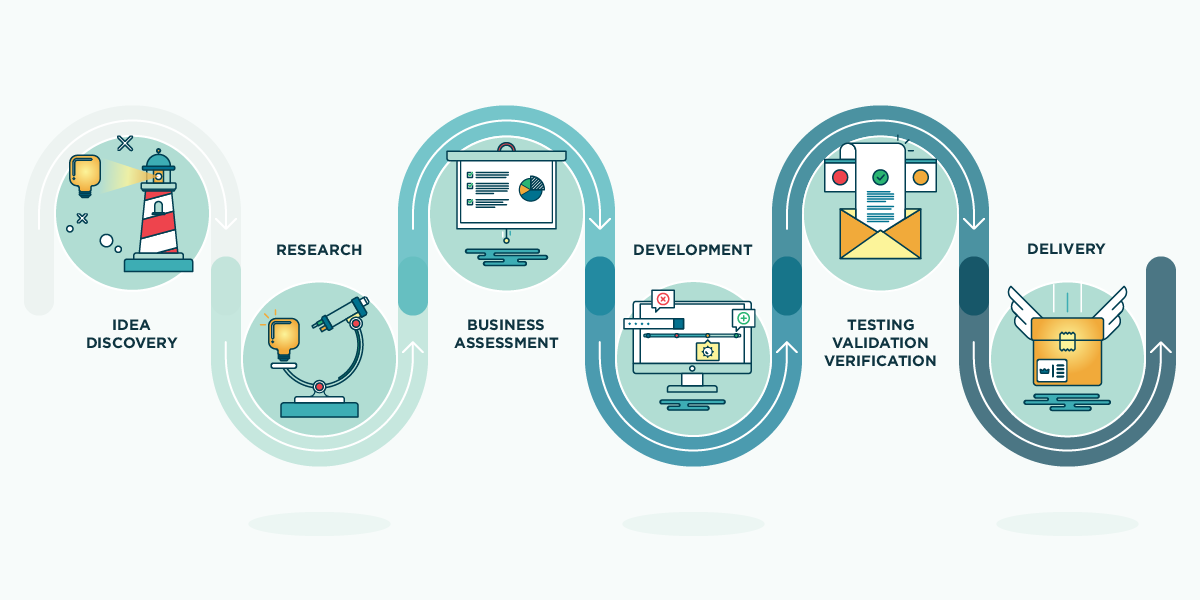If we consider the innovation process to be a journey, a detailed roadmap should be provided to ensure that we arrive safely at our destination. The term "destination" can be interpreted in a variety of ways, but we all know that increasing the value of your company is fundamental. As a result, we carefully select our steps in order to complete innovative projects on time and within budget. An innovation roadmap is a comprehensive strategy and every executive in charge of innovation in their organization should be aware of the critical stages of the innovation process.
What is a roadmap strategy?
A roadmap strategy is a method of connecting strategy to actual execution. It assists everyone involved in a project in defining key milestones, their time frames as well as achieving the goals set while maintaining the overall strategic vision. Because the roadmap strategy entails specific steps, it is easy to confuse it with an innovation plan, and the main difference may not be evident at first glance. While a plan describes how something is to be done, a roadmap strategy answers why and what exactly is to be done. There are numerous ways to define an innovation roadmap, and they vary greatly across industries, but the main points are as follows:
1. IDEA DISCOVERY
The discovery of new ideas is always the first step in any innovation process. When you have the next potentially disruptive idea, it doesn’t always matter how you came up with it. However, it is more likely that the next great idea will need to be built and shaped with the assistance of experts. As innovation management evolved, so did the methods for gathering ideas. Today, we rely on three most efficient methods, as they make the essence of our idea management application. Those are: bottom-up, top-down and crowdsourcing. Will gathering a large number of ideas, competently evaluating them, and selecting the best ones lead to the ultimate implementation of an innovation project? Yes, but there is still a lot of work to be done.
2. RESEARCH
Research is the scoping phase of the idea development process. To complete the idea development process, market data must be introduced as early as the second step of the innovation roadmap. Involve your experts in identifying the technical, market, and financial aspects of the idea’s development, before you proceed to actual idea implementation.
3. BUSINESS ASSESSMENT
While the concept has already been decided, the most critical parameters of your innovation must be clearly defined in order to build a business case. This step will clarify whether or not the idea is worth pursuing, and it is an important aspect of managing innovation risk as an innovation project progresses through the development phases. This is also when the most difficult pre-development work is accomplished, resulting in a clear picture of the product concept and development requirements.
4. DEVELOPMENT
The development phase includes the creation and testing of new products, thorough marketing and manufacturing strategies, updated financial analyses, and the resolution of any legal/patent/copyright issues. It’s time to bring together cross-functional team members to share their knowledge and determine how your new product will affect the current portfolio.
5. TESTING, VALIDATION & VERIFICATION
Because this is the final phase before the innovation hits the market, the prototype generated in the previous step will be thoroughly tested and validated. This step verifies the viability of a new product, the manufacturing process, and client approval, as well as the financial benefits of said innovation. With this data, you can effectively manage your entire portfolio in accordance with your aims and objectives.
6. DELIVERY
It’s time to launch new products, provide new services, and measure market success once your innovation is publicly available. This stage should go without saying, yet it would be remiss of us not to emphasize why it is critical. The post-delivery review tells us how well the marketing plan was implemented, and it informs us whether the innovation delivered the expected benefits, such as profitability, cost savings, reduced cycle time, or reliability.
How to make an innovation roadmap?
You may certainly utilize these stages to execute innovation, and you can also utilize the knowledge on why these steps are necessary to construct your own innovation roadmap. This roadmap may also be intuitively followed with innovation management software, which allows you to engage entire teams in a transparent, online setting. This roadmap is, in almost every case, only a glimpse of what the innovator accepts if he decides to pursue such a concept. Talk to us today to learn more about the management of innovation and what it takes to bring your ideas to life.






